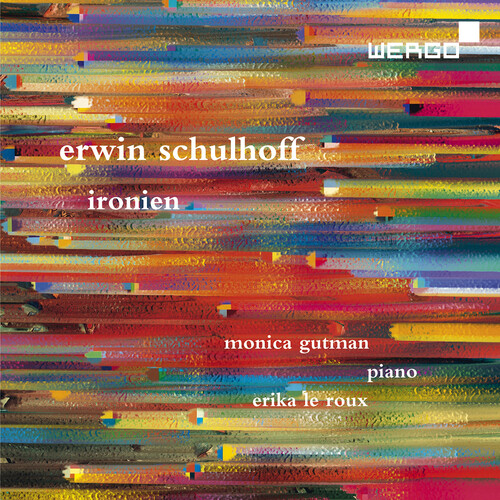Show results for
Deals
- 4K Ultra HD Sale
- Action Sale
- Alternative Rock Sale
- Anime sale
- Award Winners Sale
- Bear Family Sale
- Blu ray Sale
- Blues on Sale
- British Sale
- Classical Music Sale
- Comedy Music Sale
- Comedy Sale
- Country Sale
- Criterion Sale
- Cult Films sale
- Documentaries Sale
- Drama Sale
- Electronic Music sale
- Horror Sci fi Sale
- Kids and Family Sale
- Metal Sale
- Music Video Sale
- Musicals on Sale
- Mystery Sale
- Naxos Label Sale
- Page to Screen Sale
- Paramount Sale
- Rap and Hip Hop Sale
- Reggae Sale
- Rock
- Rock and Pop Sale
- Rock Legends
- Soul Music Sale
- TV Sale
- Vinyl on Sale
- War Films and Westerns on Sale

Ironien
- Format: CD
- Release Date: 1/17/2020

Ironien
- Format: CD
- Release Date: 1/17/2020
- Label: Wergo Germany
- UPC: 4010228738520
- Item #: 2251541X
- Genre: Classical
- Release Date: 1/17/2020

Product Notes
Erwin Schulhoff saw no contradiction between the worlds of Dada and dodecaphony. As one of the most stylistically "multilingual" composers of the early twentieth century, his output is unparalleled in it's variety - a variety that is impressively displayed in this selection of piano music for two and four hands. Schulhoff's "10 Klavierstücke" [10 Piano Pieces] from 1919 reflect the influence of Arnold Schoenberg and the Second Viennese School. The "Ironien" [Ironies] for piano fourhands have the Dadaist, anti-establishment spirit of the great European cities of the 1920s. Though composed in free atonality, the cyclical "Musik für Klavier in vier Teilen" [Music for Piano in Four Parts] from 1920 has many of the characteristics of a Baroque suite, while the miniature "11 Inventionen für Klavier" [11 Inventions for Piano] from 1921 emphasize a broad spectrum of sound colors. Schulhoff explored classical form and tradition in his "Piano Sonata No. 3" from 1927. Born in Prague in 1894, Schulhoff - the son of German- Jewish parents and a staunch Communist - died of pneumonia in a concentration camp and his music fell into obscurity. That makes this recording all the more important as a document of the dazzlingly varied output of this remarkable composer from the period between the two world wars.

